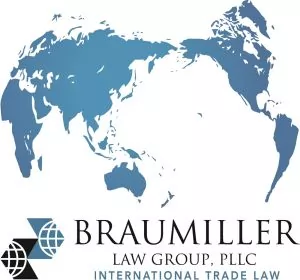The customs authority is empowered to verify whether a good imported into its territory under Preferential Tariff Treatment (PTT), complies with the rules of origin and other requirements set out in USMCA, by:
- written request or questionnaires to the importer, exporter or producer in the territory of another Party;
- verification visits to the premises of an exporter or a producer in the territory of another Party to review the records referred to in USMCA and observe the production process and the facilities used in the production of the good; or
- Any other procedure that the Parties may agree.
The verification of origin starts with a national stage, in which the Mexican importer is required to provide documentation relating to imports, especially the certificates of origin used to apply PTT. After the analysis of the documents the companies that issued the certificate of origin are identified and a verification is programmed via questionnaire or visit, depending on the complexity of the rule of origin of the product.
To determine whether a good imported into Mexico from the territory of another Party qualifies as an originating good, Mexico, through the Central Administration for Foreign Trade Operations Audit, may conduct a verification solely by means of:
Written Questionnaire under USMCA Article 5.9 (1)(a) or a visit under USMCA Article 5.9 (1)(b). If the product to be verified is a textile a special procedure applies under USMCA Article 6.6.
Objective. The main purpose of a verification of origin procedure is to require and analyze all records related to the origin of goods for which preferential tariff treatment was claimed in Mexican territory, including records associated with:
- The purchase of, cost of, value of, and payment for, the good that is exported from its territory,
- The purchase of, cost of, value of, and payment for, all materials, including indirect materials, used in the production of the good that is exported from its territory,
- The production of the good in the form in which the good is exported from its territory.
Questionnaires USMCA Article 5.9 (6)
It all starts with the notification of the questionnaire to the importer, exporter and/or producer, with a deadline of 30 days to respond. Then the analysis of the information provided is performed. There may be issuance of a subsequent questionnaire with the intention to deny preferential tariff treatment and final determination of origin verification.
Verification Visits USMCA Article 5.9 (9)
This begins with the notification of a written request for a visit with a deadline of 30 days to consent to or refuse the request. The customs administration shall provide a copy of the request to the CBP. Should the exporter or producer grant consent for the visit then it takes place. Mexican Customs shall provide to the producer the findings of facts and the legal basis for the negative determination of origin.
The producer or exporter is entitled to challenge or appeal the negative determination of origin.
Check out our new Digital Magazine Get the inside scoop on the Braumiller Law Group & Braumiller Consulting Group "peeps." Expertise in International Trade Compliance.
The content of this article is intended to provide a general guide to the subject matter. Specialist advice should be sought about your specific circumstances.


